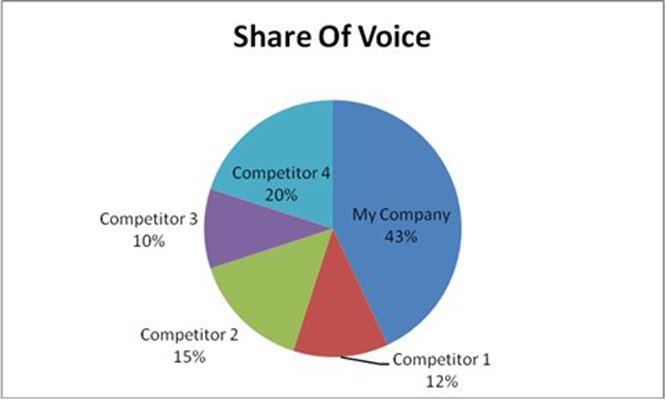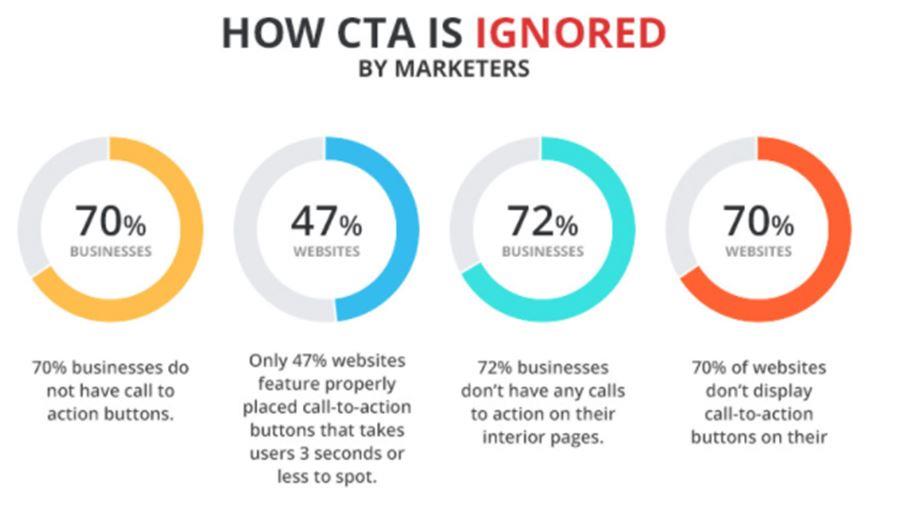
With businesses worldwide realizing the potential of online and digital marketing, both SEO (Search Engine Optimization) and SEM (Search Engine Marketing) are considered mainstream strategies.
However, a number of times, corporations fail to realize that both SEO and SEM can work incredibly well with each other.
Thus getting into the debacle regarding which one is better just admonishes the fact that they are both relatively useful for your organization’s online presence. Plus, putting them together can actually help you accomplish better results.
According to the recently compiled statistics by Business2Community, businesses one average make $3 in revenue for every $1.60 they spend on AdWords, while search engines drive 300% more traffic to sites than social media.
Companies are projected to spend over $79 billion on SEO this year, while 75% of people say that paid search ads make it easier for them to find the information they are looking for on a website or search engine.
How SEO & SEM Are Interlinked?
While SEO and SEM can be considered different approaches to marketing your business online, they are still like two sides of the same coin. SEO basically utilizes various ranking factors by Google and other popular search engines to rank your page organically on SERPs (search engine result pages).
SEM, on the other hand, incorporates various types of paid search advertising. While both may look drastically different from each other, and they should since SEO and SEM are different. However, they can be found to have incredibly similar objectives and aims.

The purpose of both SEO and SEM is to market your website or make people aware of or familiar with your offerings. However, the direction or pathway SEO and SEM choose are what make them differentiated from each other. SEO is primarily based on organic means of ranking, while SEM heavily relies on paid marketing maneuvers.
Both SEO and SEM are reliant on the use of keywords to drive traffic for your business online, and though they use different marketing techniques to do that, they both have the objective of marketing your web pages. There is no doubt that together, SEO and SEM can improve your chances of getting high-quality traffic as well as improve your conversion rates.
9 Sensational Ways SEO & SEM Can Be Combined For A Greater Effect
With that out of the way, let us now look at some of the ways you can use SEO and SEM together for successful online marketing.
1. Elevated Brand Awareness
A lot of times, businesses may consider choosing either SEO or SEM for branding their products and services. However, instead of preferring one over the other, a company can utilize SEO and SEM together to get the most out of their efforts and investment.
Augmenting your brand through SEM PPC advertising should be considered the launching point for your venture to begin its interactions with users on search engines. Paid entries on SERP are probably the first thing users loot at after typing in a query, which can help establish a positive brand impression.
Plus, with paid advertising, you are offered the ability to pair curated landing pages with your campaign. In a sense, both SEM and SEO strategies work best as long as they offer users with relevant content that helps them find viable answers to their pain points. In the end, we are all actually heading towards what customers and users want.
Search engines like Google and the rest are also focusing more on user experience. Hence, essentially just like SEO, where you create valuable content for users, SEM is also seeing a shift where ads are now being made more relevant to search queries that users type in daily.
2. Goal: Getting More Traffic & Conversions
Without setting goals, a company can neither measure its performance nor improve their operations. Goals and targets are set so that company can achieve milestones and bring about betterment in their process as it allows them to learn along the way while experimenting with various tools and strategies.
Both SEO and SEM in this regard can be quite easy to analyze as the main aims are the same, which is to bring in more traffic and increase conversion ratios. For purely an SEO-based strategy, you can do the following:
- Set time frames for objectives, including visitors, leads, and customers per month, quarter, half-year, and annual. This will then become a benchmark for your team to accomplish and chase after.
- Perform a comparative analysis for SEO against other forms of marketing channels, including paid, referral, and other sources.
- Develop action plans for future conversion rates and incorporating rich snippets, overcoming technical issues, improving customer experience, and enchanting lead quality.
- Measure your SEO SOV (share of voice) with the help of keywords, organic search, link building, content creation, and social media

On the other hand, setting goals and targets for a purely SEM-based strategy, you can do the following: (for ease of understanding, we are taking a PPC working model as an example)
- Identify your audience as, without them, no campaign can work. The broadest category of audiences is either B2B or B2C. The deeper you understand your audience, the more impactful your campaign becomes. Developing a customer persona and a customer journey map can help you target your audiences with greater precision.
- Set KPI (key performance indicators) and measure clicks along with user paths once they land on your website. Pro Tip: for PPC campaigns that aren’t focused on sales, a broader and less expensive set of keywords can help you keep costs on the lower end.
- Create brand awareness through ads and examine their performance by tracking engagement, impressions, reach, and other variables.
- Your business goals and audiences are also dependent on that type of campaign that you want to run. A search campaign, for instance, is for targeting warm traffic, or it can be used to attract customers of competitors. Product listing ads are, on the other hand, sales-based. Google Display Network and YouTube can be used to display ads to target customers with specific preferences.
- Measure leads through a PPC link and then add them to funnel so that they can then be transformed in sales. Furthermore, make sure to use a highly effective CTA (call to action) to keep pushing consumers through your sales funnel.

Now, suppose you take both SEO and SEM together. In that case, you find that both share the same aims, including building greater traffic, attracting audiences, creating a valuable user experience, and eventually improving the conversion ratios so that leads can be transformed into sales.
3. Applying Competitive & Local Data for Both
Another popular strategy used by organizations that want to dominate the virtual realm through their online presence is to gather data through SEO and then use SEM strategies to boost their approach further.
According to the Forrester Total Economic Impact report, many organizations were found to ascertain real success using the same local and competitive data to guide their paid and SEO strategies.
What companies do is that they take SEO data collected over a period of time and then through it at their PPC with a limited budget and see how far they can get with it. This kind of interaction between two teams working on two different models is then able to yield greater results than they could have achieved on their own.
In short, SEO can provide Paid search teams with data that infers the long term benefits of running a particular campaign. Whereas paid search teams can aid the SEO department by providing them with valuable insights they have gained over time to help organic teams craft SEO-based strategies for better ranking on search engines.
4. Keyword Symbiosis
While the keywords themselves may differ, there is no doubt that both organic and paid search marketing is heavily reliant on keywords. Organic keywords are indefinitely used to attract traffic through SEO, while PPC keywords are actually acquired by bidding on them through paid search marketing campaigns.
Furthermore, it is a known fact that results on SEO take time to show up, whereas, for paid search, the outcomes are pretty quick and generate immediate results. Now, this is where a company must understand that an opportunity for them lies the can be cashed upon which I would like to call as ‘Keyword Symbiosis”.
In short, it means that keyword data and insights from one campaign can be used to augment the other’s performance. For companies and brands that have been building their organic rankings for quite some time can use their SEO-based keyword data to boost their paid campaigns.
On the other hand, those establishments starting relatively fresh can run paid campaigns at first and then use the acquired keyword data to augment their organic strategies in the future. It is all about harvesting the right keyword knowledge and using proven profitable information to enhance visibility and bring in more traffic.
While preparing your campaigns, you need to be very careful while choosing the keywords. You have to analyze the audience you want to target. Suppose, if you are selling chairs, you should go for keywords like, best office chairs, buy a comfortable chair, and similar.
5. Main Effort & Backup
SEO is indeed the main effort or the long term approach for companies, and the reason is quite simple. PPC or any other paid strategy is not feasible in the long run because it is a recurring expense that companies have to bear.
Plus, it is all too common for organizations to look forward to reducing cost and get away with less expensive options. Due to this very dogma that exists predominantly, many companies who start their search engine marketing well through paid campaigns eventually have to fall back to SEO as their main bread and butter one way or another.
6. Marketing Your Website & Services
Both SEO and SEM help you target your websites and services. However, both follow their own unique methods to do so and thus allow professionals to differentiate between them. Take on-page SEO, for example, where best practices are related to optimizing individual web pages to get them to rank higher on search engines.
These can include tactics such as keyword research, use of geo pages that target users from a particular city or region, and producing high-quality content with respect to customers and users that is known as optimizing content for search intent.

Furthermore, on-page SEO also includes improving user experience, and this can relate to faster page loading times, easy to use navigation, image optimization (retaining quality of the image while reducing its size), use of shorter and more user-friendly URLs, schema markups, reader-friendly content, optimizing page titles and H1 tags, and interlinking.
Phew!!! This is no easy task, but on-page SEO is well for SEO, meaning it is for making your website and pages rank higher. On the other hand, off-page SEO includes brand mentions, commenting, influencer outreach, social bookmarking and networking, guest posting, external link building, and so on.
However, once you see past all of these shenanigans, you realize that the aim of all these activities is truly but the same and, i.e., to improve your rankings, get more traffic, generate more leads, and make more sales. This is what paid search can exactly do as well, but the method and approach are different.
So, in short, companies can run both organic and paid strategies to get more benefits and juice for their website and landing pages. It doesn’t have to be a war between SEO and SEM, where people are denouncing one another and arguing which is best or better.
7. Maximizing SERP Coverage
One obvious reason that a company should use SEO and SEM is that this offers them the ability to appear on search results more often. A company selling laptops would appear on a user’s result page searching to buy laptops both as an ad by let’s say by Google and as an organic search result. It is quite simple, really.
A site running a paid campaign would eventually find its way to the top of the SERPs, while organizations that have been carefully investing their efforts to rank higher organically will also find the mention of their website in the organic section of the SERPs.
Thus when a user gets to see both your paid and organic results, it naturally helps to create a positive image of your company. Therefore when you use both paid and organic strategies, it can effectively help you to maximize SERP coverage.
8. Organic & Paid Synergy
Organic and paid strategies can work together to create synergy. However, how an establishment reaches that point of reverence can differ uniquely based on their business model, their targeted audiences, geographical representation, approach, as well as offered products and services.
Paid and organic synergy, in short, means when both search strategies can be used to optimize your overall search strategy, and in order to do this, you need strong communication and enablement of teams to work together and assist one another.
Information and valuable insights collected by both of your paid and organic teams should be freely exchanged and made available so that managers and supervisors can make better and informed decisions.
9. Tracking & Evaluating Performance
While organic and paid marketing can differ immensely from one another, there is no doubt that both can be effectively measured and evaluated for their performance. Paid strategies are easier to analyze, as a result, are often generated on a short time basis, whereas results for SEO and organic forms of marketing may even take as much as six months to show considerable influences.
Even students who seek essay help use SEO and SEM strategies side by side to make their businesses flourish online.
Conclusion
I hope this post was insightful enough to offer you meaningful justifications as to how SEO and SEM can be used together to effectively make your websites and landing pages rank better on SERPs and generate more traffic.
There is no doubt that today’s successful companies are not using SEO or SEM but are more towards following both SEO and SEM together to boost their online marketing strategies. For more questions about the topic, feel free to share your queries by leaving mention of them in the comment section below.
Amanda Jerelyn works as an SEO Specialist at Crowd Writer that provides personal statement service UK. Digital marketing is her passion and she spends her free time reading digital marketing blogs. Amanda is a passionate traveler and loves to explore different parts of the world.